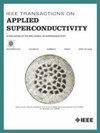超级链接:超导电力电缆在110千伏配电网中的发展和影响
IF 1.8
3区 物理与天体物理
Q3 ENGINEERING, ELECTRICAL & ELECTRONIC
引用次数: 0
摘要
SuperLink项目开发了一种先进的电缆设计技术,利用具有高工程电流密度的超导导线,旨在满足城市配电网的需求。该项目旨在提供一个多功能且易于部署的110千伏电力链路,以满足德国慕尼黑等大都市地区的基础设施需求。在15公里的距离内实现500 mva的输电能力需要在几个关键领域具有卓越的性能:高温超导导体的低交流损耗,坚固紧凑的低温介电系统,以及高效的隔热。本研究概述了SuperLink电缆的基本设计原则,并对其与110千伏网络的集成进行了全面分析。通过负荷流模拟来评估不同供电场景下的电网性能,重点关注线路负荷和故障电流水平。结果表明,SuperLink电缆不仅减轻了现有线路的过载,还减少了整个网络的损耗,突出了其在城市环境中提高电网效率和可靠性的潜力本文章由计算机程序翻译,如有差异,请以英文原文为准。
SuperLink: Development and Impacts of a Superconducting Power Cable in a 110-kV Distribution Network
The SuperLink project has developed an advanced cable design technology utilizing superconducting wires with high engineering current density, designed to meet the demands of urban power distribution networks. The project aims to deliver a versatile and easily deployable 110-kV power link tailored to the infrastructure requirements of metropolitan areas, such as Munich, Germany. Achieving a 500-MVA power transmission capacity over a 15-km distance necessitates exceptional performance in several key areas: low ac losses in high-temperature superconducting conductors, robust and compact cryogenic dielectric systems, and highly efficient thermal insulation. This study outlines the fundamental design principles of the SuperLink cable and provides a comprehensive analysis of its integration into a 110-kV network. Load flow simulations were conducted to assess network performance under different supply scenarios, with a focus on line loading and fault current levels. The results demonstrate that the SuperLink cable not only alleviates overloaded existing lines but also reduces overall network losses, highlighting its potential to enhance grid efficiency and reliability in urban environments
求助全文
通过发布文献求助,成功后即可免费获取论文全文。
去求助
来源期刊

IEEE Transactions on Applied Superconductivity
工程技术-工程:电子与电气
CiteScore
3.50
自引率
33.30%
发文量
650
审稿时长
2.3 months
期刊介绍:
IEEE Transactions on Applied Superconductivity (TAS) contains articles on the applications of superconductivity and other relevant technology. Electronic applications include analog and digital circuits employing thin films and active devices such as Josephson junctions. Large scale applications include magnets for power applications such as motors and generators, for magnetic resonance, for accelerators, and cable applications such as power transmission.
 求助内容:
求助内容: 应助结果提醒方式:
应助结果提醒方式:


